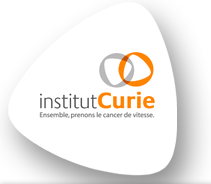Maximizing the clinical benefit of radiotherapy in solitary plasmacytoma: An international multicenter analysis
Résumé
Objective: Although local definitive radiotherapy (RT) is considered the standard of care for solitary plasmacytoma (SP), the optimal RT parameters for SP patients have not been defined. The aim of this retrospective study is to analyze the effectiveness of various RT doses, volumes, and techniques, as well as to define the relevant prognostic factors in SP. Methods: Between 2000 and 2019, 84 patients, including 54 with solitary bone plasmacytoma (SBP) and 30 with extramedullary plasmacytoma (EMP), underwent RT at six institutions. Results: The overall RT median dose was 42 Gy (range, 36.0–59.4). The median follow-up period was 46 months. Overall, the local control (LC) rate was 96%, while the complete remission (CR) rate was 46%. The 5-year local relapse-free survival (LRFS), multiple myeloma-free survival (MMFS), progression-free survival (PFS), and overall survival (OS) rates were 89%, 71%, 55%, and 93%, respectively. Using an RT dose above 40 Gy was associated with a higher complete remission (CR) rate and a lower rate of local relapse. Modern irradiation techniques were associated with a trend toward a higher LC rate (98% vs. 87% for conventional, p = 0.09) and a significantly lower local relapse rate (6% vs. 25% for conventional, p = 0.04). However, RT dose escalation and technique did not lead to a significant effect on MMFS, PFS, and OS. Univariate analyses identified several patient characteristics as potentially relevant prognostic factors. In SBP patients, systemic therapy administration was associated significantly with MMFS and PFS rates. Conclusion: Using an RT dose >40 Gy and modern RT techniques may improve the local control and reduce the rate of relapse, without a significant impact on survival rates. The addition of systemic therapies may improve the MMFS and PFS rates of SBP patients.
Domaines
Sciences du Vivant [q-bio]
Origine : Fichiers éditeurs autorisés sur une archive ouverte
licence : CC BY - Paternité
licence : CC BY - Paternité
